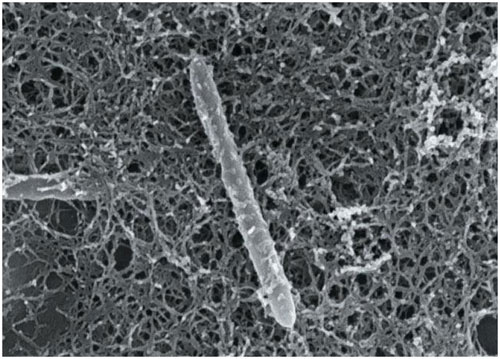Discover the most lonely creature on the planet
Biological experts are stunned to find a whole new strain of bacteria at a depth of 2.8 km underground. They exist without sunlight and oxygen.
Bacterial species were found when Mponeng gold mine was explored, near Johannesburg city of South Africa. When you see water in a crack in basalt, scientists of Princeton University (New Jersey, USA) and Lawrence Berkeley National Laboratory (California, USA) conduct analysis of genetic samples that they Find in the water to find out how many microorganisms live in it. The results show that 99.9% of DNA belongs to a species of bacteria never before known. They named the new species Desulfotomaculum .
In an environment with temperatures of up to 60 degrees Celsius, without light and oxygen (O), Desulfotomaculum exists without photosynthesis to produce food . This finding led many scientists to believe that similar bacteria could exist on other planets.
"This is the first time scientists have found a biological community in which there is only one species of bacteria. That means they have to create everything necessary for life from a dead environment. ", Carl Pilcher, director of NASA's Space Biological Institute, said.

Bacteria Desulfotomaculum.(Photo: Newscientist)
All microorganisms that we know need photosynthesis and sunlight directly or indirectly. For example, microorganisms on the ocean floor do not receive sunlight, but they use dissolved oxygen in water. That dissolved oxygen is produced by photosynthesis of plankton on the surface.
Dylan Chivian, expert of Lawrence Berkeley National Laboratory, found Desulfotomaculum to extract energy from uranium and other radioactive elements in basalt . It has some genes to separate carbon (C) from dissolved carbon dioxide (CO 2 ) and nitrogen (N) from rock. C and N are two important elements for life, because they make up proteins, amino acids. Desulfotomaculum has genes to produce all the amino acids it needs.
Desulfotomaculum avoids harmful environmental agents by creating a hard shell ( inner spore) to protect DNA and RNA from dehydration and the entry of toxic chemicals. It has a whip to guide.
"People have questioned: Does life exist on other planets? Is there any creature that can survive without sunlight? Now I can say yes and Desulfotomaculum is evidence, " Dylan said.
Chris McKay, a NASA space biologist, thinks that from the case of Desulfotomaculum, scientists have the right to hope that one day we will find a bacterium that lives below the surface. the face of Mars, Saturn or some planet in the solar system.
- Find the most 'lonely and poor' planet in the universe
- The most lonely bird on the planet is dead
- Story of the most lonely acacia tree on the planet
- Discovery of Jupiter-like lonely planet in the Milky Way
- Discover planet like earth
- The life of the most lonely animals on the planet
- Discovering the planet
- What is the most lonely human being?
- Detecting a 'lonely' planet near Earth
- Lonely Planet voted 10 most beautiful wonders on the planet
- Discover three earth-like planets
- 8 countries 'most lonely' in the world
 Why do potatoes have eyes?
Why do potatoes have eyes? 'Tragedy' the world's largest carnivorous life: Death becomes ... public toilet
'Tragedy' the world's largest carnivorous life: Death becomes ... public toilet Tomatoes were once considered 'poisonous' for 200 years
Tomatoes were once considered 'poisonous' for 200 years Detecting microscopic parasites on human face
Detecting microscopic parasites on human face